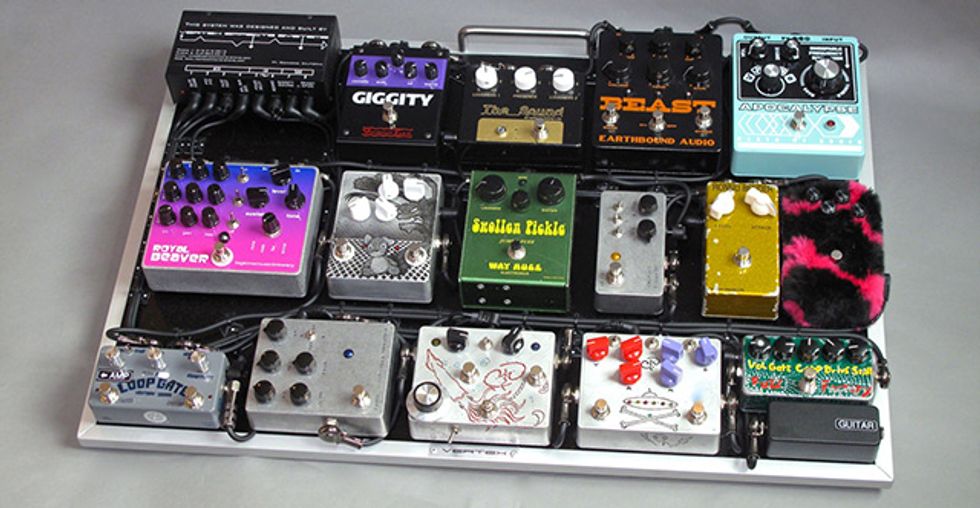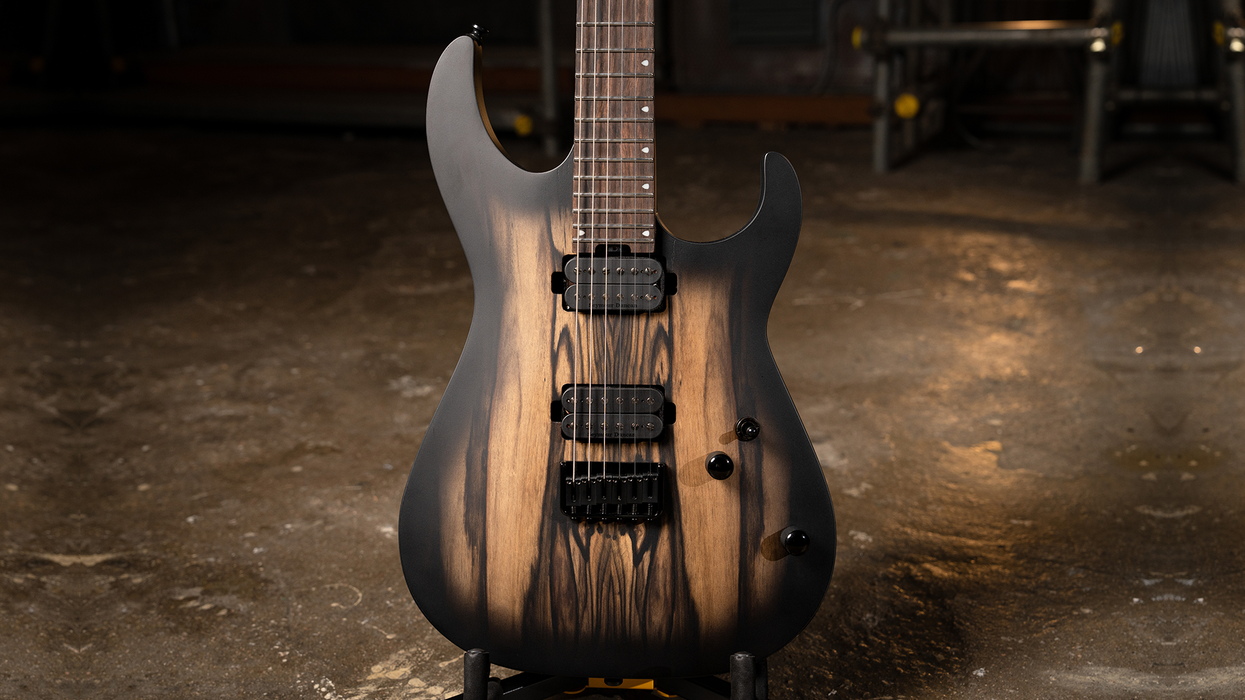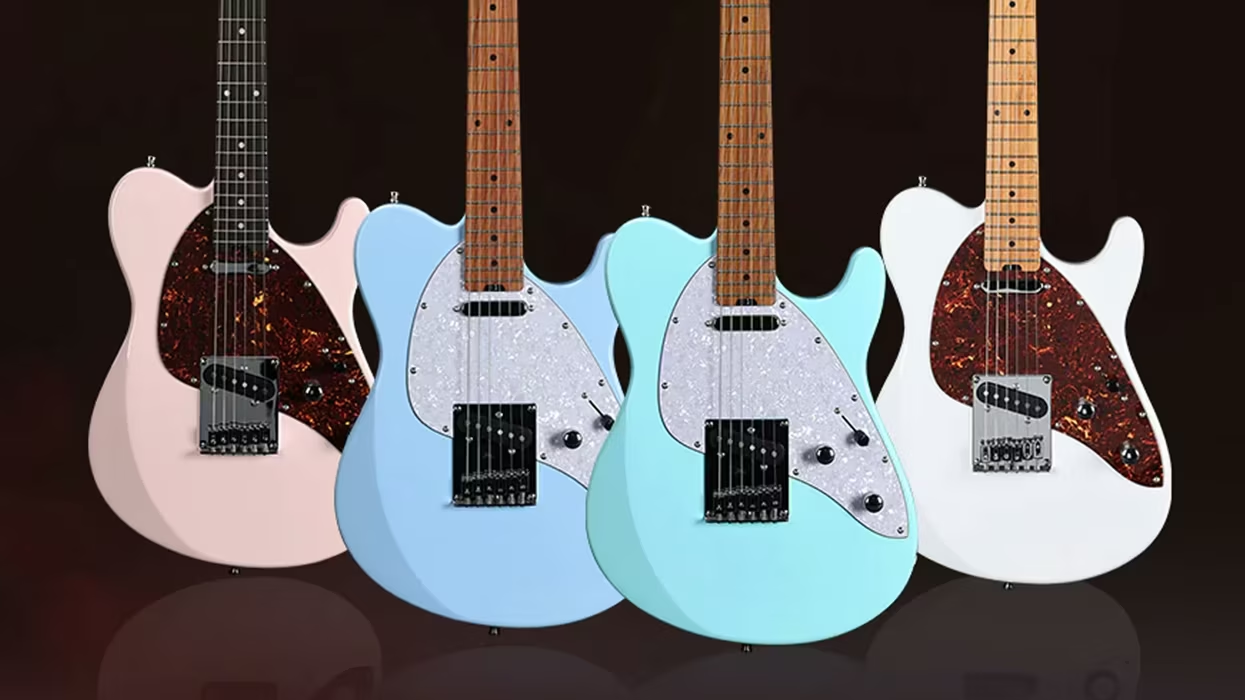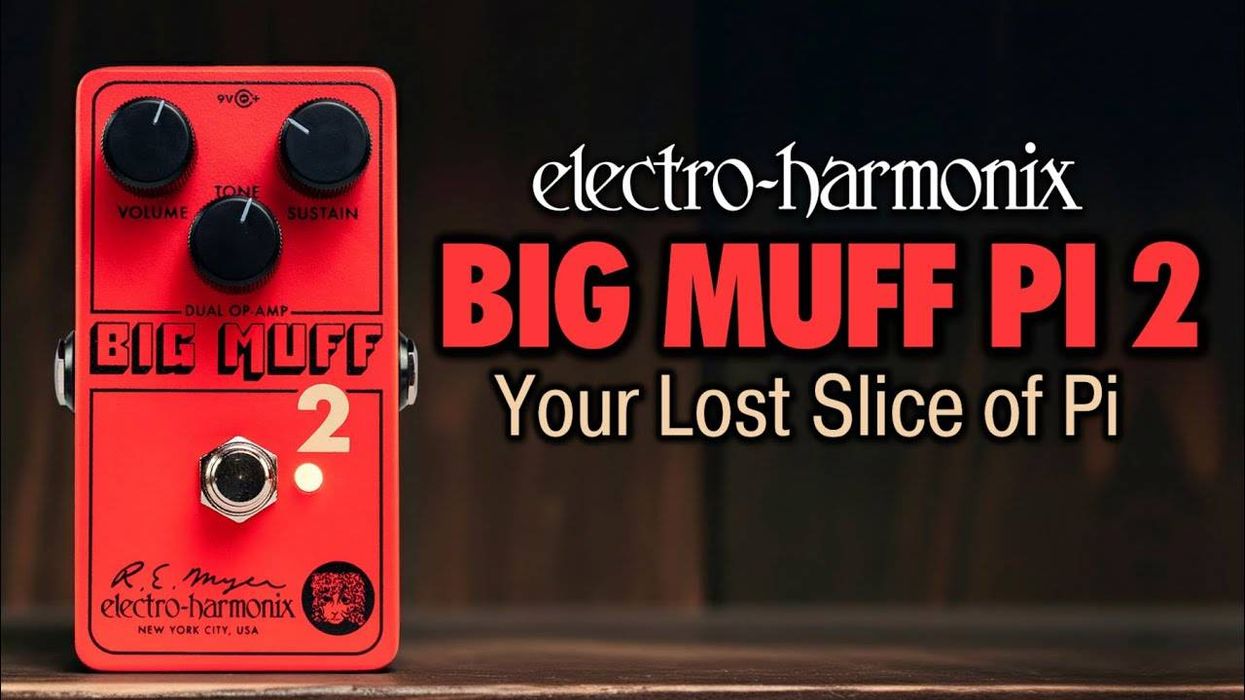When I read about my pal Nels Cline’s five essential effects here in Premier Guitar, I was fascinated by what he had to say. Even though Nels and I have been playing together for more than 30 years, even making a DVD together about guitar effects (The Art of the Stompbox), I was still surprised and enlightened by what he wrote about his own historical choices in guitar effects. It made me want to speak up and share my own thoughts on this topic.
Nels and I both admit to being fairly eccentric players who live our musical lives oblique to the mainstream, even when we pass through it. So, like Nels, I hope that you take this information as something to make you sound more like yourself, rather than like anyone else—that’s what we always try to do. Nels and I may have similar goals beyond, but we often travel different spaceways to get there.
1. Compression
Compression was something that I knew about from studying the art of the sonic sculpture in the recording studio, before there were compressor pedals for guitar. More than as something to squash down loud things, I thought of it as something to make tiny, quiet things very loud. I liked the tiny sonic artifacts of the fingers moving over strings, as well as the natural and artificial harmonics that a light touch produces, and I wanted them to be as loud as the regular fretted notes.
The old MXR Dyna Comp was the first tool that I used for this. I think I got one very soon after it first appeared on the market. I always placed a volume pedal after it so that I could control the dynamics of what I heard, that way I could make the loud notes quiet and the quiet notes loud. This gave me the expanded palette of timbre and sound that I was seeking. However, it also gave me unwanted hum, from the expanded amp noise and the loud hiss of that particular compressor. This led me to taking a 160X DBX compressor that was designed for the studio and sticking it into the effects loop of my old transistor Acoustic 114 amp that I was using back in 1977. I think it was one of the very first amps with an effects loop, and I probably became one of the first players to use studio gear in that loop, such as the DBX compressor and a Lexicon Prime Time digital delay. Around that time I met Howard Dumble, and he made a wonderful tube amp for me, with an effects loop, that I still use to this day. After a few years, I moved the compressor back in front of the amp, while still keeping the volume pedal in the effects loop after the Dumble’s preamp.
Decades later, there are many fine stompbox compressors that are as quiet and musical as the old studio rack gear. Nowadays, I favor three particular stompbox compressors, utilizing whichever is best for the sort of gig that I’m on. The first of these three is the Old World 1960 Compressor, which is two parallel optical compressors with super hi-fi sound, and a compression style like an old Teletronix LA2A compressor. The second is the Barber Tone Press, which allows me to change the mix balance between a compressed signal and the uncompressed signal, thereby allowing transients to break through, while the sustain continues underneath. Finally, an amazing and pricey compressor from England is the Origin Effects Slide Rig. This pedal emulates the wonderful sound of Lowell George on Little Feat’s Dixie Chicken album, simulating the sound of two Urei 1176 compressor channels in series. With those three pedals I can do pretty much anything in modern compressed guitar sounds, and I continue to discover new sounds with them every day.
2. Distortion
Like Nels, I will lump fuzz, distortion, and overdrive together. I’ll also throw in guitar amp distortion, in order to be a completist. Before I got my Dumble amp in the late ’70s, I used a Ram’s Head Big Muff for maximum distortion. I generally play clean or totally fuzzed out. The Dumble Overdrive Special amp introduced me to a wider spectrum of distortion and I pretty much stuck with the amp’s distortion and clean sounds. I also loved the little Rivera-designed Fender Super Champ, which I could carry around more easily for fun and jamming. It turned out to be a great amp for the studio, too, although I was not as fond of its overdrive circuit.
I discovered the Chandler Tube Driver in the ’80s and stuck it in front of both amps. When 1998 rolled around, I encountered the now-discontinued (but new at the time) Tech 21 Comptortion pedal. As my pal Glenn Phillips recently pointed out, this pedal sounds like it was designed to sound like me. To this day the CompTortion is a must-have for me anytime and anyplace that I play. Frequently, I use it direct with nothing else in the studio. One thing I love about it is that it is gated, but with the gate detection before the distortion, thus a listener never hears the gating. (I first heard this idea of gating in the old ADA MP-1 rack preamp.) The CompTortion is also the only really fuzzy distortion pedal that I know of that seems to find unique sounds from whatever guitar I plug into it. I have way too many guitars, and this pedal makes me sound like I have twice the actual quantity. Tech 21 came up with two more pedals in recent years that I love the sound of: the American Woman and the Liverpool.
There are two more types of distortion pedals that I rely on today—one is a variety of Burns Buzzaround Clones. Known as the fuzz that Robert Fripp used on his No Pussyfooting album with Brian Eno, this suddenly fashionable-again fuzz circuit produces a massive wall of distorted sound that reminds me of the intensity of getting sprayed in the face by a skunk during a quiet walk in the woods. My final favorite and necessary-at-every-gig distortion pedal is the Tanabe Zenkudo or Dumkudo, two pedals that successfully emulate the sound of a Dumble Overdrive Special amp. This brings me full circle back to that favorite amp of mine, which has molded my playing style since the late ’70s. My picky ear is quite happy using the Dumkudo direct in the studio when I want a Dumble-esque sound. Since I have been a Dumble user for 35 years, folks often ask me what kind of amp to get for that sound, and I tell them that if you can’t afford a Two-Rock or a Glaswerks, then get a Dumkudo pedal and a good Fender Twin Reverb. The Dumkudo also allows me to get a third or fourth Dumble sound when I am using a Dumble-style amp; so, like the CompTortion, it’s necessary for me in most playing circumstances. (Whoops ... I almost forgot the Crazy Tube Circuits Starlight, a really terrific fuzz pedal from Greece.)
3. Momentary Pitch Shift
In 1982, I noticed that my pal Glenn Phillips, of The Hampton Grease Band fame, was doing something that I had never seen anyone do before. He was using an MXR Pitch Transposer rackmount harmonizer to do momentary pitch shifting with the unit’s footswitch. I had one of those MXR units, and I immediately adopted Glenn’s innovation for my own use.
Before Van Halen and Stanley Jordan, there were more than a few nearly forgotten virtuoso two-handed tappers: most notably Jimmie Webster and Harvey Mandel (look them up). I’d always been attracted to this technique, but it did take a lot of work and practice. What Glenn had discovered with the MXR unit seemed to be a less demanding way to go. He would rock his foot on the transposer’s footswitch and momentarily shift the pitch of the guitar signal by a specific interval. It could be a 4th, 5th, or an octave either higher or lower, and it would sound as if he had fretted with his right hand 5, or 7, or 12 frets above or below the note that he was fretting with his left hand. For me, the transposer acts like a moveable capo across all six strings. It’s also great for superimposing different pentatonic scales to yield unusual harmonic colors.
In 31 years of expanding this technique on my own, it’s proved to be an interesting journey. I’ve had to learn to copy the ornamentation and melodies that I play with the momentary pitch shift technique, substituting actual two-handed or pick-tapping to imitate the effect for when the transposer was broken, which happened a lot with the old MXR unit. I’ve also perfected getting a perfect fifth up with a pick harmonic that sounds just like a note fretted 7 frets higher.
After a few years with that clunky MXR, I gave up on it and used a modified ADA PitchTraq to provide the same effect for me. Since 2009 I have been using the Eventide Pitchfactor stompbox, which is easily programmed to do this effect. This effect needs a momentary switch, as opposed to a toggle switch, to work properly, so it does not work with a DigiTech Whammy, for instance. One needs to be able to move instantly back and forth between different harmonizer intervals, and not have to step on a toggle switch twice. Needless to say, the dry signal is out of the mix.
4. Reverse Delay
I’ve always loved backwards guitar solos, such as Jimi’s Are You Experienced solo. As soon as I got an Eventide H-3000 harmonizer, back in the ’80s, I realized that its reverse shift algorithm would let me create this effect in live performances. Such digital effects take samples of your playing and then play them back in reverse, cut up into whatever quanta you set the delay for. Five to seven seconds seems to be optimal for backwards soloing for me. I spent a few years practicing playing delayed, both backwards and forwards, over songs and recordings of chord changes, until I could play in the now, what I wanted to happen five or seven seconds in the future. This does wonders for your time sense, more than any practicing with a metronome could ever accomplish. One catch was that when you kicked the effect in, the harmonizer had to be listening to what you had been playing, so I used the effects loop of a TC 2290 that bypassed the harmonizer’s return, but not the send to it. Then when I wanted to sound backwards, I could kick the effect in instantly.
Eventide brought out the Eclipse harmonizer in 2002, and I used that model for this effect for many years. If I don’t want to bring that rack unit, I can use a TC Flashback pedal, with an Electro-Harmonix Killswitch, muting the return and not the send, to and from the TC. Most recently I picked up the Red Panda Particle, which has a great reverse shift, along with some unique stuttering abilities, based upon input level. It’s a great entry pedal to start messing around with reverse delay. Oddly, most high-end pedals that do reverse delay did not really implement this properly—they mute the send, instead of the return, leaving a guitarist with dead air when the solo is supposed to start. My pal Nels and other friends enjoy some lower-fi pedals for the unique/warm tones that they can create with them. I, on the other hand, have always preferred the most hi-fi pedals and rack units that I can find. For me, this backwards effect works best in maximum fidelity, and all of the pedals listed in this section are super hi-fi in practice.
5. Reverb & Speaker
Finally, where your electric guitar meets space is reverb and the speaker. Near the end of the signal path, reverb has always been very important for me. Half the time I like to rely on the amp’s reverb, if it’s a good-sounding one. Otherwise, I used an old Alesis MidiVerb for years, which had two particular reverb algorithms that I really loved, and that I dimly recall as pre-sets #49 and #21. Nowadays the tiny Neunaber Wet Mono Reverb seems to be the magic reverb for me. It’s a handcrafted reverb, designed by one man instead of a team or committee, to provide many different sounds with a single preset, with variable decay and mix. That one preset covers everything that I ever need, and the pedal works equally well in front of an amp, and also in an amp’s effects loop.
Unfashionably, I’ve always been an old JBL speaker guy. Playing a lot of free-improvised gigs, I’ve had to play very quietly to blend in with an acoustic cello or violin player, yet I need to have a screaming distorted tone when I want it, still at that quiet volume. A nice thing for me about the old JBL instrument speakers, like the D-120 or D-130, is that they sound quite similar at both high and low volume. That way I don’t have to depend on playing loud to get the sound I want. They don’t color the sound much, either. I pretty much try to get my sound onstage before the speaker, and if I’m in the studio, I often prefer to get it by going direct, with no amp, where the only space is defined by reverb.
I use all these effects both onstage and in the studio, but I think my favorite time to play effected guitar is when I make soundtracks for the little videos that I create in Antarctica, during my “day” job there, where I work as a research diver under the sea ice. My guitar in the soundtracks may well be the only electric guitar regularly recorded in that frozen continent every year. As Captain Beefheart sang in “Big Eyed Beans from Venus”—check these out.
 Henry Kaiser has appeared on more than 250 record albums. A few of the folks with whom he has recorded or performed include: Richard Thompson, David Lindley,
Jerry Garcia, Derek Bailey, David Torn, Bill Frisell, Bill Laswell, Jaojoby, Thomas Mapfumo, Terry Riley, Sonny Sharrock, Steve Kimock, Cecil Taylor, etc.
He's also a filmmaker, and a research diver in the US Antarctic Program.
Henry Kaiser has appeared on more than 250 record albums. A few of the folks with whom he has recorded or performed include: Richard Thompson, David Lindley,
Jerry Garcia, Derek Bailey, David Torn, Bill Frisell, Bill Laswell, Jaojoby, Thomas Mapfumo, Terry Riley, Sonny Sharrock, Steve Kimock, Cecil Taylor, etc.
He's also a filmmaker, and a research diver in the US Antarctic Program.






![Rig Rundown: Russian Circles’ Mike Sullivan [2025]](https://www.premierguitar.com/media-library/youtube.jpg?id=62303631&width=1245&height=700&quality=70&coordinates=0%2C0%2C0%2C0)

















